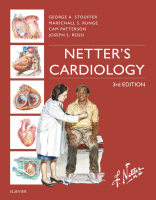Physical Address
304 North Cardinal St.
Dorchester Center, MA 02124

Right and left heart catheterization is the introduction of a catheter into the right heart and left heart chambers, respectively. Right and left heart catheterization provide key hemodynamic data that can be used to diagnose various cardiac disorders. Left heart…

The ability to directly visualize arteries with an injection of a radiopaque contrast agent was a seminal advance in the history of modern medicine and led directly to the development of the concept of transluminal angioplasty (first performed in 1964),…

The past decade has seen rapid development in cardiovascular imaging technologies coupled with novel clinical applications. Noninvasive cardiac imaging technologies currently allow for assessment of cardiac morphology, function, perfusion, and metabolism. Both cardiac computed tomography (CCT) and cardiac magnetic resonance…

Stress ECG and stress imaging studies are widely used noninvasive procedures that provide important information on cardiac function and the presence of hemodynamically significant coronary artery disease (CAD). The correct use of stress testing is critically important for the cost-effective…

Echocardiography is a highly reproducible, safe, and widely available noninvasive imaging technique integral to the practice of modern clinical cardiology. With the use of high-frequency ultrasound to image cardiac and great vessel structure and blood flow, this method provides definitive…

Technical Aspects Chest radiography was one of the first clinical studies to use x-rays, which were discovered in 1895 by Wilhelm Conrad Roentgen. X-rays are typically generated by passing a current across a diode, which results in the generation of…

It is now >100 years since the Dutch physiologist Willem Einthoven recorded the first ECG in humans. Although the number of recording leads has increased from 3 leads to at least 12 leads, and the recording instruments have evolved into…

Myocardial infarction and congestive heart failure are the leading causes of morbidity and mortality worldwide, despite great therapeutic achievements in the treatment of cardiovascular diseases. The inability of the heart to regenerate lost cardiac muscle, coupled with a robust fibrotic…

Cardiovascular epidemiology studies the determinants and distribution of cardiovascular disease (CVD). The overarching goal of CVD epidemiology is to reduce the incidence and prevalence of CVD within the population. Cardiovascular epidemiology has provided vital bidirectional connections between basic mechanistic science…

Although there has been a 25.3% decline in cardiovascular disease (CVD) mortality between 2004 and 2014, coronary heart disease (CHD) is still the leading cause of mortality and morbidity in the United States. It is estimated that >92 million American…